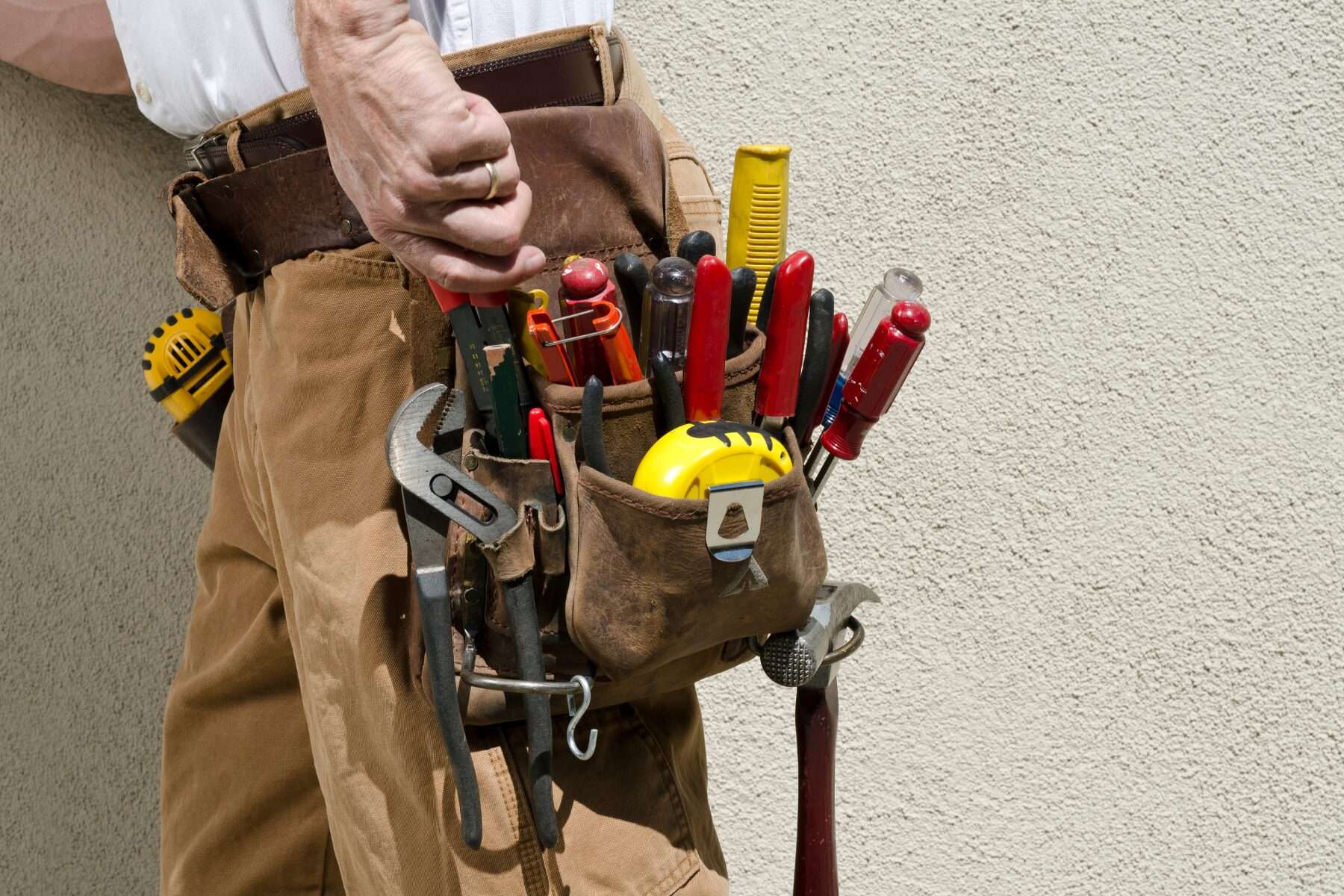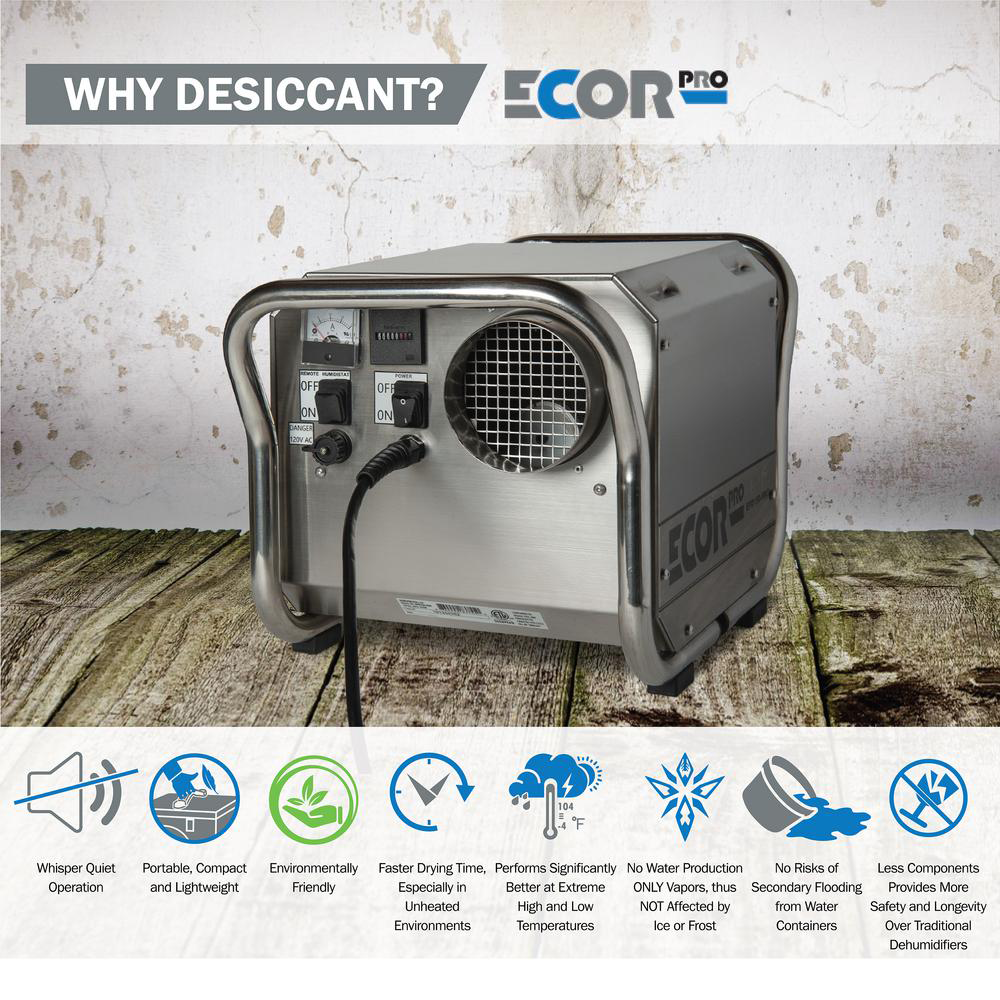
Top Applications Of Portable Dehumidifiers
Top Applications Of Portable Dehumidifiers
By: Brothers Equipment And Supply
Portable dehumidifiers offer an effective solution to manage humidity levels across various environments, ensuring comfort, health, and safety.
This comprehensive guide will explore the versatile applications of portable dehumidifiers in residential, commercial, and industrial settings, providing valuable insights to help you select the right unit for your specific needs.
Let’s get started!
Portable Dehumidifiers in Residential Settings
Living Areas
Preventing Mould and Mildew
Excess humidity in living spaces can create the perfect conditions for mould and mildew to thrive. These fungi not only cause unsightly stains but can also lead to health issues such as respiratory problems and allergies. Health Canada recommends keeping indoor humidity levels between 30% and 50% to prevent mould growth and maintain a healthy living environment. Portable dehumidifiers are effective in reducing moisture in living rooms, bedrooms, and basements, helping to protect your home and health.
Enhancing Comfort
High humidity can make indoor spaces feel sticky and uncomfortable, particularly during the humid summer months that many regions in Canada experience. By removing excess moisture from the air, portable dehumidifiers help maintain a comfortable indoor environment, making it easier to cool your home and reducing the strain on your air conditioning system. This not only improves comfort but can also lead to lower energy bills.
Basements and Crawl Spaces
Moisture Control
Basements and crawl spaces are especially prone to moisture buildup due to their proximity to the ground and often inadequate ventilation. This dampness can lead to mould growth, structural damage, and an environment conducive to pests. Portable dehumidifiers are specifically designed to extract moisture from these areas, even in low-temperature conditions, preventing long-term damage and promoting a healthier home.
Preventing Structural Damage
Persistent moisture in basements can compromise the structural integrity of your home, leading to issues such as wood rot, corrosion, and the weakening of foundations. By using a portable dehumidifier, you can control humidity levels and prevent these problems, ultimately protecting the value and safety of your property.
Bathrooms and Laundry Rooms
Managing Humidity
Bathrooms and laundry rooms generate significant amounts of moisture through daily activities such as showering and drying clothes. Without proper humidity control, this moisture can lead to peeling paint, warped wood, and mould growth. A portable dehumidifier is an excellent solution for quickly removing excess humidity from these spaces, keeping surfaces and fixtures dry and well-maintained.
Preventing Condensation
Condensation on walls, ceilings, and windows is a common problem in high-humidity areas like bathrooms. This moisture can cause water stains and contribute to the deterioration of building materials. Portable dehumidifiers help reduce condensation by lowering the overall humidity in the air, ensuring these spaces remain dry and in good condition.
Portable Dehumidifiers in Commercial Spaces

Offices
Maintaining Air Quality
In office environments, poor air quality caused by high humidity can lead to discomfort, decreased productivity, and increased absenteeism. According to the National Research Council of Canada, maintaining optimal indoor humidity levels can improve comfort and reduce the risk of respiratory illnesses. Portable dehumidifiers play a crucial role in maintaining a healthy atmosphere in offices, contributing to better employee performance and well-being.
Protecting Electronics
Sensitive electronic equipment, such as computers and servers, is vulnerable to moisture-related damage, including corrosion and short-circuiting. Maintaining stable humidity levels with portable dehumidifiers helps protect these valuable assets, extending their lifespan and reducing the likelihood of costly repairs or replacements.
Retail Spaces
Customer Comfort
Creating a comfortable shopping environment is essential for customer satisfaction and retention. High humidity can make retail spaces feel stuffy and uncomfortable, which may deter customers from staying and browsing. Portable dehumidifiers can be strategically placed throughout the store to control humidity levels, ensuring a pleasant atmosphere that encourages customers to spend more time and make purchases.
Protecting Inventory
Many retail products, such as clothing, books, and electronics, are sensitive to moisture and can be damaged if stored in a humid environment. Portable dehumidifiers help protect inventory by maintaining appropriate humidity levels, reducing spoilage, and preserving the quality of the merchandise.
Restaurants and Cafés
Maintaining a Hygienic Environment
In food service establishments, controlling humidity is critical for maintaining hygiene and preventing health hazards. Excess moisture can lead to mould growth in kitchen areas, compromising food safety and violating health regulations. Portable dehumidifiers help keep cooking and dining areas dry and sanitary, contributing to a safer and more appealing environment for customers.
Preventing Slip Hazards
Moisture on floors increases the risk of slip-and-fall accidents, which can be a liability concern for business owners. By reducing humidity and preventing condensation, portable dehumidifiers help keep floors dry and safe for both customers and staff.
Portable Dehumidifiers in Industrial Settings
Warehouses and Storage Facilities
Protecting Stored Goods
Industrial storage facilities often house large quantities of goods that are susceptible to moisture damage, such as paper products, textiles, and perishable items. A report by the Canadian Institute for Environmental Research and Development highlights the importance of proper humidity control in preserving the quality and longevity of stored materials. Portable dehumidifiers offer a flexible solution to manage moisture levels in various areas of a warehouse, ensuring that all goods remain in optimal condition.
Preventing Rust and Corrosion
Metal products and machinery stored in warehouses are prone to rust and corrosion when exposed to high humidity. Portable dehumidifiers help create a controlled environment that inhibits oxidation, protecting valuable equipment and reducing maintenance costs.
Workshops and Garages
Maintaining Equipment
Tools and machinery in workshops and garages can quickly degrade in moist conditions, leading to rust and operational issues. Portable dehumidifiers are essential for preserving the functionality and longevity of this equipment by keeping humidity at safe levels.
Improving Working Conditions
High humidity can make industrial workspaces uncomfortable and may even pose health risks due to increased mould and bacterial growth. Dehumidifiers contribute to a healthier and more comfortable working environment, enhancing employee satisfaction and productivity.
Healthcare Facilities
Controlling Infection Risk
Maintaining strict humidity control is vital in healthcare settings to prevent the spread of airborne pathogens and ensure patient safety. The Public Health Agency of Canada recommends maintaining indoor humidity levels between 30% and 50% in healthcare facilities to minimize infection risks. Portable dehumidifiers enable precise control over moisture levels in various areas, including patient rooms, laboratories, and storage areas for medical supplies.
Protecting Medical Equipment
Sensitive medical equipment can be adversely affected by excess moisture, leading to malfunctions and inaccuracies. Portable dehumidifiers help safeguard these critical devices by maintaining a stable and dry environment, ensuring reliable performance and reducing the need for costly repairs.
Portable Dehumidifiers for Specialty Applications
Greenhouses
Optimizing Plant Growth
Proper humidity control is essential for healthy plant growth in greenhouses. Excess moisture can promote fungal diseases and hinder plant development. Portable dehumidifiers allow greenhouse operators to precisely manage humidity levels, creating optimal growing conditions that enhance plant health and yield.
Marine Applications
Moisture Control on Boats
Boats and yachts are constantly exposed to water, making interior moisture control a significant concern to prevent mould, mildew, and unpleasant odours. Utilizing compact portable dehumidifiers in cabins and storage areas helps maintain a dry and comfortable environment, protecting both the vessel and its contents from moisture-related damage.
Temporary or Emergency Situations
Disaster Recovery
In the aftermath of floods, leaks, or other water-related disasters, rapid moisture removal is critical to prevent further damage and mould growth. Portable dehumidifiers are invaluable tools in disaster recovery efforts, offering quick and efficient drying solutions for affected structures and belongings.
Event Spaces
Temporary event venues, such as tents and converted spaces, can experience high humidity levels due to large crowds and varying weather conditions. Employing portable dehumidifiers ensures a comfortable atmosphere for attendees and protects equipment like sound systems and lighting from moisture damage.
Choosing the Right Portable Dehumidifier for Your Needs
Assessing Your Space
Calculating Required Capacity
Selecting the appropriate dehumidifier involves determining the size and humidity level of the space in question. Dehumidifier capacities are typically measured in pints or litres of moisture removed per day. For example, a small room (up to 500 square feet) with moderate humidity may require a unit that removes 10-20 pints per day, while larger or more humid spaces will necessitate higher-capacity models. Utilizing manufacturer guidelines and humidity calculators can aid in making an informed decision.
Considering Mobility Needs
If you intend to use the dehumidifier in multiple locations, look for models equipped with wheels and handles for easy transportation. Lightweight and compact designs are particularly beneficial for residential use or in situations where quick deployment is necessary, such as emergency drying.
Energy Efficiency
Importance of Energy Star Ratings
Energy efficiency is an important consideration, especially for units that will operate continuously. Choosing an Energy Star-certified dehumidifier ensures lower energy consumption and reduced operating costs without compromising performance. According to Natural Resources Canada, Energy Star models are at least 15% more efficient than standard models, contributing to both environmental sustainability and financial savings.
Noise Levels
Considering Noise in Different Settings
Noise output varies among dehumidifier models and can impact comfort levels, particularly in residential or office environments. When selecting a unit, consider the decibel (dB) rating and opt for quieter models (around 50 dB or lower) for noise-sensitive areas. Some advanced models feature adjustable fan speeds and nighttime modes to further minimize noise disruption.
Maintenance Requirements
Ease of Use and Maintenance
Regular maintenance is essential to ensure the longevity and effectiveness of your dehumidifier. Look for models with easily accessible and washable filters, straightforward control panels, and convenient water tank designs. Some units offer continuous drainage options, eliminating the need for manual emptying and simplifying upkeep.
Conclusion
Portable dehumidifiers play a critical role in maintaining healthy, comfortable, and safe environments across a multitude of settings in Canada. From protecting your home’s structure and improving indoor air quality to safeguarding valuable equipment and inventory in commercial and industrial spaces, these versatile devices offer practical solutions for effective moisture control. By understanding the diverse applications and carefully selecting the right dehumidifier for your specific needs, you can ensure optimal performance and long-term benefits for your space.
FAQs
What is the difference between a portable and a whole-house dehumidifier?
- Portable dehumidifiers are standalone units designed to dehumidify individual rooms or specific areas and can be easily moved as needed. Whole-house dehumidifiers are integrated into a home’s HVAC system and control humidity levels throughout the entire building. Portable units are more flexible and cost-effective for targeted use, while whole-house systems provide comprehensive humidity control but require professional installation and a higher upfront investment.
How do I know if I need a portable dehumidifier?
- Signs that you may need a portable dehumidifier include persistent condensation on windows, visible mould or mildew, musty odours, and a general feeling of dampness in the air. Additionally, if you or your family members experience increased allergy or respiratory symptoms indoors, reducing humidity levels with a dehumidifier can help alleviate these issues.
Can a portable dehumidifier be used in multiple rooms?
- Yes, portable dehumidifiers are designed for mobility and can be moved between rooms as needed. However, for optimal effectiveness, it’s best to use the dehumidifier in enclosed spaces and allow sufficient time to reduce humidity levels before relocating it.
How often should I empty the water tank on a portable dehumidifier?
- The frequency depends on the humidity level, capacity of the unit, and size of the water tank. In high-humidity conditions, you may need to empty the tank once or twice a day. Many models offer continuous drainage options using a hose attachment, which eliminates the need for manual emptying.
Is it safe to run a portable dehumidifier continuously?
- Yes, most portable dehumidifiers are designed to operate continuously and have features like auto-shutoff when the desired humidity level is reached or when the water tank is full. Continuous operation is particularly useful in areas with consistently high humidity.
What are the best places to position a portable dehumidifier in a room?
- Place the dehumidifier in a central location away from walls and furniture to allow for proper air circulation. Ensure that all doors and windows are closed to maximize efficiency. In larger rooms or spaces with specific moisture issues, positioning the unit near the source of humidity can be more effective.
How do I maintain my portable dehumidifier?
- Regular maintenance includes cleaning or replacing air filters every few weeks, wiping down the water tank to prevent mould growth, and ensuring the air intake and exhaust vents are free from dust and obstructions. Periodically inspect the coils and other internal components according to the manufacturer’s instructions.
What size portable dehumidifier do I need for a basement?
- The appropriate size depends on the basement’s square footage and humidity level. For example, a 1,000 square foot basement with moderate humidity may require a 30- to 40-pint capacity unit, while damp or wet conditions may necessitate a 50- to 70-pint model. Refer to manufacturer sizing charts for precise recommendations.
Can a portable dehumidifier help with allergy symptoms?
- Yes, reducing indoor humidity levels can help alleviate allergy symptoms by inhibiting the growth of mould, mildew, and dust mites, all of which thrive in moist environments and are common allergens.
Are portable dehumidifiers energy efficient?
- Many modern portable dehumidifiers are designed with energy efficiency in mind, especially those with Energy Star certification. Energy-efficient models consume less electricity while effectively controlling humidity, resulting in lower utility bills and reduced environmental impact.
By understanding and utilizing the diverse applications of portable dehumidifiers, Canadians can effectively manage indoor humidity levels across various settings, ensuring healthier, more comfortable, and more productive environments year-round.
If you have any questions about our article “Top Applications Of Portable Dehumidifiers” or need portable dehumidifiers contact sales@brothers-equipment.com or chat with us on LiveChat or social media.
